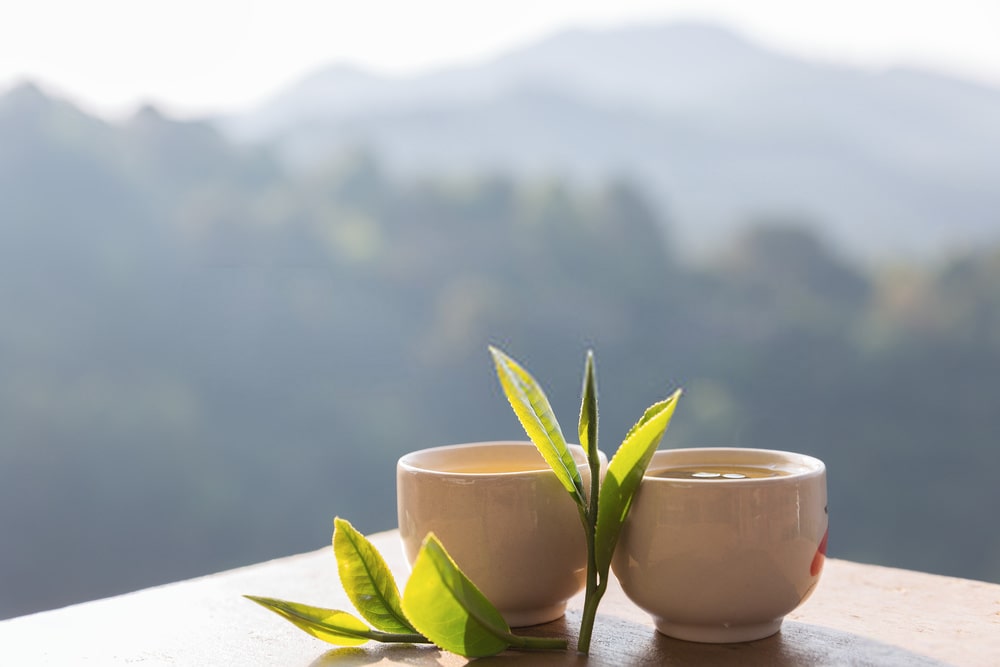Caffeine content
Up to 5% of the dry weight of tea is caffeine.
Tea contains caffeine because its bitter taste protects the leaf against insect bites. So, caffeine in tea acts as a natural defence of the plant.
Buds and younger leaves tend to have more caffeine because insects are more likely to bite them since they are tender. As expected, larger and more mature leaves will hence have less caffeine. From this, we can deduce that oolong teas may have a lower content of caffeine since they are made from those more mature leaves.
Summer teas tend to have more caffeine because the plant has to defend itself against more insects.
Teas coming from the Assamica variety (India, Africa) tend to have more caffeine than those coming from the Sinensis variety (East Asia), all other things being equal. Also, teas from cloned plants (i.e. grown from cuttings) are likely to have more caffeine than those from seedlings.
Japanese teas that are shaded (Matcha, Gyokuro, Kabusecha) have more caffeine too. That’s because the lack of sunlight causes the plant to produce more caffeine.
The brewing style (Western vs Gongfu) is expected to have an impact too. Since in the Gongfu style we are brewing more leaves various times, that should give us more caffeine.
Other factors such as processing method or tea type (e.g. black, green) have an unclear impact on the content of caffeine. However, roasting the tea will reduce its caffeine content. Hence, we expect Hojicha and dark oolongs to have less caffeine.
Finally, decaffeinated teas are not fully caffeine-free.
But why are we talking about caffeine?
Good point… Caffeine has some undeniable properties.
Pros and cons of caffeine consumption
It mainly helps us to perform better for longer. In moderate quantities, it can protect us against diseases like coronary-related problems, Parkinson’s, Alzheimer’s, cataract, etc. You can learn more about the potential benefits of caffeine from this article.
But it has its downside too if consumed in larger quantities – it may cause jitters, high blood pressure, anxiety, insomnia or rapid heart rate. More about the negatives of caffeine you can find in this article.
Compared to coffee, tea has much less caffeine, except for Matcha. So both the pros and cons of consuming caffeine are less pronounced when drinking tea.
One essential compound present in tea – L-Theanine – in combination with caffeine has been found to enhance our cognitive function, thus increase our focus and attention. At the same time, the combination reduces the negative effects of caffeine like jitters and sudden energy crash because it helps release the caffeine slowly into the body.
Controlling the caffeine in the cup
If you are brewing loose leaf tea (and I hope you do), you can control how much caffeine gets released into the cup. So, if you want a brew with more caffeine you need to:
- use more leaves
- steep them for longer and in hotter water
- drink two or more infusions.
However, be wary of not over-brewing since it will spoil the tea, especially if it’s green tea.


